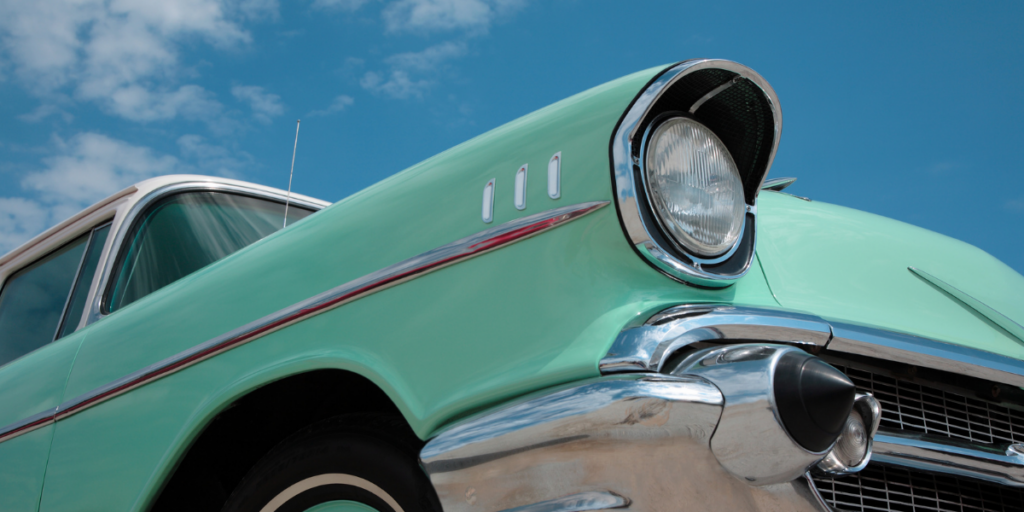When it comes to the world of automobiles, classic cars hold a special place in the hearts of many. They represent an era gone by, they’re a symbol of craftsmanship, and they’re a cherished piece of history. Whether you’re a dedicated collector or someone who’s just inherited a family heirloom, ensuring your classic car is protected is paramount. This post delves deep into the realm of insurance coverage for classic cars, explaining what qualifies a vehicle for this coverage, the age requirements, and how it stands apart from regular car insurance.
By the end, you’ll have a clearer understanding of how to safeguard your prized possession. And for residents of Maine and the northeast, know that Kasprzak Insurance is your trusted agent for ensuring your classic wheels get the coverage they not only need, but deserve.
What is Classic Car Insurance Coverage?
Classic car insurance, sometimes known as collector car insurance or antique car insurance, is a specialized type of insurance designed specifically for the unique needs of classic car owners. Unlike standard auto insurance, which focuses on everyday vehicles and their current market value, classic car insurance emphasizes the collectible and often appreciating value of the vehicle.
What are the Benefits of this Insurance Coverage?
Here’s a breakdown of some of the key features and benefits of classic car insurance:
Agreed Value Coverage: Standard car insurance typically covers the actual cash value of a vehicle, which factors in depreciation. In contrast, classic car insurance often operates on an “agreed value” basis. This means the insurer and the car owner agree upon a specific value for the car when the policy is written. If the car experiences a total loss, the owner is compensated for this agreed-upon value, not a depreciated amount.
Limited Use Provisions: Recognizing that classic cars are often not daily drivers, this insurance usually includes provisions for limited use. This means the car is mainly used for specific purposes like exhibitions, club activities, parades, and occasional leisure drives. Due to this, the risk is perceived to be lower, and consequently, the premiums can be more affordable.
Specialized Repair & Restoration: Classic cars have unique needs when it comes to repairs. They might require rare parts or the expertise of specialized mechanics. Classic car insurance acknowledges this and ensures that in case of damage, the car can be restored to its original condition using appropriate methods.
Coverage for Spare Parts: Many classic car enthusiasts stock up on spare parts for potential restorations or repairs. Recognizing this, some classic car insurance policies offer coverage for these valuable spare parts.
Flexibility: Some policies might offer flexibility for things like occasional general use or the ability to raise the mileage limit for special occasions.
Tailored Add-ons: Depending on the insurer, there might be additional options available tailored to the classic car community. This could include coverage for trip interruptions if a classic car breaks down during a show or event, medical coverage for injuries during exhibitions, or even auto show medical reimbursement.
What Cars Qualify for this Insurance?
The term “classic car” might be a bit broad, but when it comes to insurance, specific criteria must be met. Classic car insurance typically covers vehicles that are considered antique, vintage, or collector cars. This might include:
Antique Cars: Generally, vehicles that are at least 25 years old and are in close-to-original condition.
Vintage Cars: Often, cars made between 1919 and 1930.
Collector Cars: These can be newer models but are usually limited editions or cars that have a strong enthusiast following.
Exotic and Luxury Cars: Though not ‘classic’ in age, some high-end vehicles may be treated as collectibles due to their rarity and value.
How Old Must a Car be to Qualify?
While the age criteria can vary slightly between insurance companies, a typical benchmark for classic car coverage is that the vehicle should be at least 20 to 25 years old. However, age alone doesn’t determine eligibility. The car’s condition, rarity, and overall value also play pivotal roles. Some newer vehicles, as mentioned above, can qualify if they are deemed collectible.
How do I Get Started with Classic Car Coverage?
Venturing into the world of classic cars is both exciting and meticulous, especially when it comes to ensuring the right protection for your car. The first step is understanding your vehicle’s eligibility. As discussed, age, rarity, condition, and other factors come into play when determining if a car qualifies for classic insurance.
Once you’ve established eligibility, it’s essential to gather all pertinent information about your classic car. This includes its make, model, age, any restorations, or modifications made, and an estimate of its current market value. Having clear, high-quality photographs from multiple angles and documentation, like maintenance records, can be advantageous when discussing coverage specifics.
Now comes the pivotal step – choosing the right insurance provider. For those in Maine and the surrounding regions, a wise decision is to reach out to an expert in the field. At Kasprzak Insurance, we provide in-depth knowledge and dedication to classic car enthusiasts. I can be reached at [email protected] or by calling 207-247-4959 ext. 115. I would welcome the opportunity to guide you through the nuances of classic car coverage. I thrive in ensuring your vehicle receives the tailored protection it deserves.
